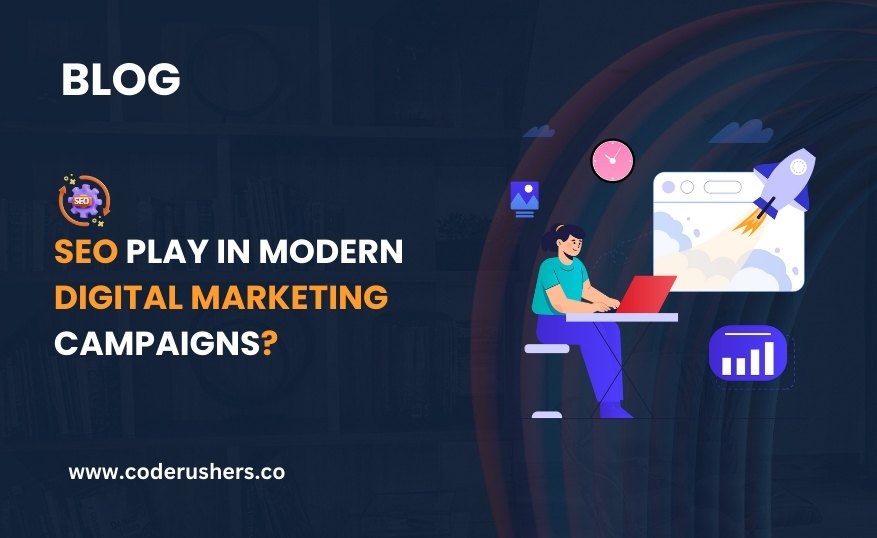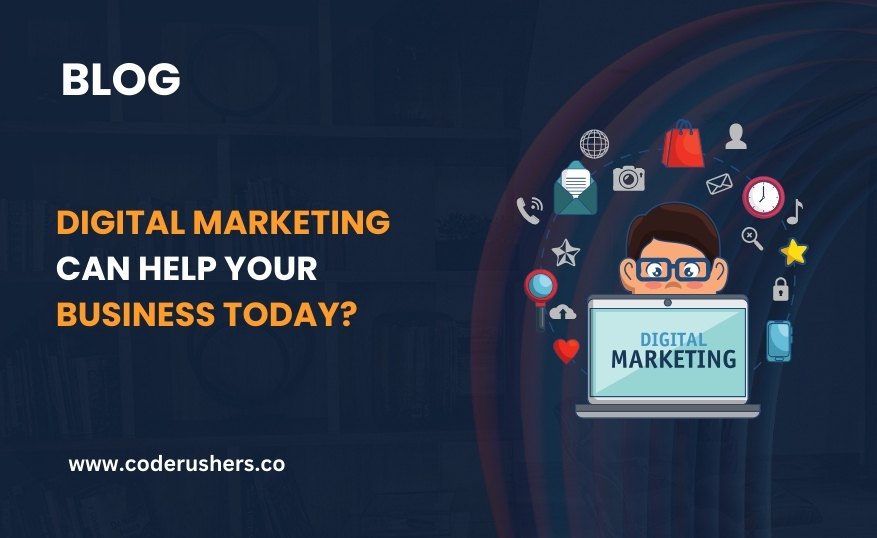In today’s digital age, marketing isn’t just about catchy slogans and flashy ads – it’s about connecting with people on a deeper level, cutting through the noise, and delivering real value. With millions of brands competing for attention online, how do you stand out and make a lasting impact? That’s a real challenge!
The answer lies in mastering digital marketing including its core principles. Whether you’re a seasoned marketer or just dipping your toes into the digital waters, understanding these eight foundational principles will empower you to craft strategies that capture attention and build meaningful connections with your audience.
So, let’s dive in and explore the essential principle of digital marketing and how digital marketing helps in business transformation!
Guiding Principles Of Digital Marketing that You Should Know
1. Customer-Centric Approach

The customer-oriented strategy focuses on the customers’ wants, expectations, and actions of your target market. It underlines the need to place the customer at the center of all marketing communication activities to guarantee that each marketing campaign, content, and communication is valuable to the customer.
Uses:
- Personalized Content: Each person wants to read about something that is interesting and would attract his or her attention most, and this is why knowing your audience is very important.
- Improved Customer Experience: A customer-centered approach guarantees the customer a good experience at every point of contact and thus, customer satisfaction.
- Enhanced Brand Loyalty: If the customers are treated well and their needs are recognized, they are more likely to be loyal to your brand, and to recommend it to others.
2. Data-Driven Decision Making

Data-driven marketing refers to the use of data and analytics to inform the direction and actions of a marketing campaign. This principle deals with real-time feedback to identify success factors, failure factors, and areas that require a change.
Incorporating data-driven insights into your digital marketing services can significantly enhance the effectiveness of your campaigns.
Uses:
- Optimized Campaigns: It allows you to pinpoint which of the efforts done in the previous campaigns were effective and which were not so good, thus improving the strategies for the next campaigns.
- Audience Insights: Data assists in understanding your audience better by providing insights into their behavior, their likes, and their spending habits in the market.
- Performance Tracking: The use of KPIs comes in handy as it enables one to monitor the efficacy of the used marketing strategies constantly hence facilitating modification of strategies accordingly.
3. Integration Across Channels

Multichannel means ensuring that customers get a consistent experience with the brand across all the digital touchpoints they use, such as social media, e-mail, websites, and mobile applications. This principle of digital marketing ensures all the communication channels are coordinated to pass a unified brand image.
Effective integration across channels is a crucial aspect of Internet Marketing services, enabling brands to deliver cohesive and engaging experiences.
Uses:
- Consistent Branding: Integrated marketing ensures that your brand’s voice, message, and aesthetics remain consistent across all channels, strengthening brand recognition and trust.
- Better Reach and Engagement: By integrating various channels, you can reach a wider audience and engage them in a more meaningful way, as they can interact with your brand on their preferred platform.
- Improved Customer Journey: A seamless experience across channels ensures that customers can easily navigate through their journey, from awareness to purchase, without facing any disjointed or confusing interactions.
4. Content is King

The saying, ‘Content is King’ emphasizes the significance of quality and relevance in digital marketing. It is the content that forms the basis of every digital marketing plan because it fosters interaction, and trust and provides information. When combined with a Search Engine Optimization service, great content can boost your brand’s visibility and online
presence.
Uses:
- Engagement and Retention: Interesting material relevant to the readers will compel them to look longer at the article or video, or follow your social accounts.
- SEO and Traffic: Content created strategically with desirable keywords that will help to solve your audience’s problems will bring more traffic to your website through the search engine results page.
- Thought Leadership: Providing quality and relevant information regularly helps your brand establish itself as an expert in a given niche hence earning the client’s trust.
5. Personalization
Personalization can be defined as the ability to target your marketing campaigns in such a way that reflects the specific needs of your target market. Unlike traditional concepts of advertising, this principle aims at providing unique and meaningful experiences to each of the users.
Uses:
- Increased Engagement: For instance, the use of the recipient’s name in an email or products that a customer has shown interest in in the past is likely to grab the person’s attention and make him or her take some action.
- Higher Conversion Rates: Personalization helps customers feel valued and gives them the perception that someone out there cares for them, this can be very effective in increasing the conversion ratio as it provides the customers with relevant offers or content that they would be interested in.
- Improved Customer Retention: Loyal customers are core to any business and when customers get accustomed to personalized experiences they are more likely to remain loyal to your brand.
6. Value Proposition

A well-described value proposition identifies the specific purpose that your product or service serves to the client. It answers the question, “Why should a customer choose your brand instead of the other?” This principle deals with defining the unique value proposition that the business offers.
Uses:
- Differentiation: A good value proposition defines your brand in the marketplace in terms of the benefits consumers derive from your products or services.
- Customer Attraction: Thus, explaining a clear value proposition can reach potential customers who are in search of such benefits that you are offering, thus making chances of conversion high.
- Enhanced Marketing Messages: Your value proposition should be the primary focus of all of the marketing messages that you share to guarantee that your audience always recognizes it.
7. Agility and Adaptability
As everyone knows, the world is going digital at a very fast pace and there is nothing more important than being agile and flexible. This principle infers that business operations should be dynamic, and able to adapt to change by continuously responding to the market, the behavior of consumers, and technology.
Uses:
- Quick Response to Trends: It is strategic since you can easily seize new opportunities or changes in consumer preferences, making you stand out from your competitors.
- Continuous Improvement: The adaptive approach is defined as the ability to always experiment, learn, and modify the strategies to increase the level of performance and, in turn, the results.
- Resilience to Change: Flexibility means your brand can quickly adapt to change, including changes in the economy or the emergence of new competitors.
8. Ethical and Transparent Practices

It is important to uphold high standards of ethics and transparency to ensure that the reputation of the firm is not compromised. This principle of digital marketing entails transparency in all the marketing activities practiced including the gathering of information and presenting the products or services.
Uses:
- Trust Building: Sometimes the most effective way to market to your audience is to be honest with them, for instance, when giving your prices or stating your terms and conditions.
- Compliance and Reputation: Staying ethical in practice such as not violating the privacy of the customer or adhering to laws such as GDPR helps in keeping away from legal problems and maintains the reputation of the brand.
- Customer Loyalty: Consumers tend to patronize brands that are ethical and trustworthy since they want to associate themselves with organizations that share the same values.
How to Apply These Principles in Digital Marketing Strategies
Understanding these principles is just the beginning; the real impact comes from implementing them effectively. This is where digital marketing helps in businesses truly shine, as it transforms their reputation and drives meaningful results. To make the most of these principles, here are some easy ways to use them in your digital marketing strategies:
Creating Customer-Centric Content
To adopt a customer-oriented strategy, one should begin with research to identify the customers. Conduct surveys and social listening, as well as analyze data to figure out their preferences, pain points, and demands. Then, use this data to develop more content that targets their issues and offers solutions or usefulness to them.
Related Resources:
- All Posts
- Artificial intelligence
- Content Marketing
- Digital Marketing
- Email Marketing
- Link Building
- pay-per-click
- Search Engine Optimization
For instance, if the audience of your brand is having a hard time choosing the right skincare products, come up with blog posts, videos, or even social media posts that offer possible solutions based on skin type.
Optimising Data for Effective Decision-Making
Integrate decision-making by ensuring that there are proper analytical frameworks like Google Analytics, insights from social media, and Customer Relation Management software. Keep checking the data to monitor the effectiveness of your campaigns, website traffic, and customer interactions.
Experiment with the approach using A/B testing to see which one is most effective with the target audience. For example, if you find out that videos have higher engagement than plain text posts, tweak your content creation and sharing approach to accommodate more videos.
Coordinating touchpoints for continuity
To integrate channels effectively, create a customer journey map that shows the various touchpoints where your target audience engages with your brand. It is crucial to synchronize your messaging, design, and user experience across all the channels.
For instance, if a customer clicks on a social media ad and gets to your website, the flow should be smooth, and all aspects, such as color schemes, product offerings, and copy, should be consistent with each other.
Prioritizing Quality Content
Focus time and efforts on generating relevant and valuable content for the target audience as well as for the company. Create a content schedule that will show how you plan to execute the aforementioned blogging, social media, videos, and other forms of content.
Concentrate on narration, offering recommendations, and responding to your audience’s concerns. Always make updates to the content to make it new to the market and meet all the current trends.
Conclusion
Digital marketing is a dynamic industry, and it is crucial to master the fundamentals to design efficient and meaningful strategies. With a customer-oriented approach, leveraging data, connecting channels, focusing on content quality, and personalization, you can develop a strong digital marketing strategy to generate results and form long-term
relationships with the audience.
Understanding how digital marketing helps in business growth allows you to apply these principles effectively, ensuring that your strategies align with your business goals. When using the principle of digital marketing, always remember that effective learning and adaptability are the cornerstones of success in this dynamic world of customers and the
digital environment.



